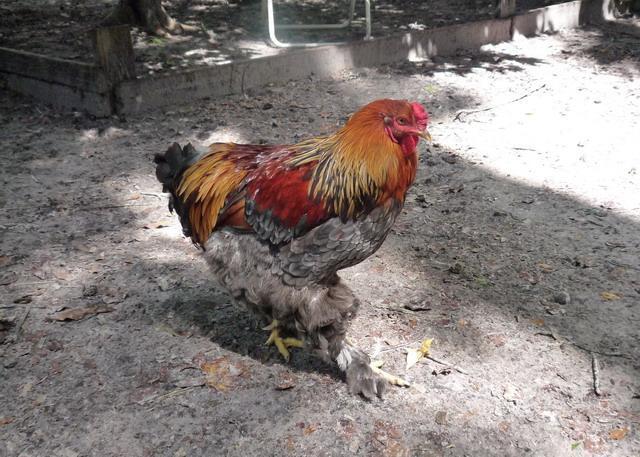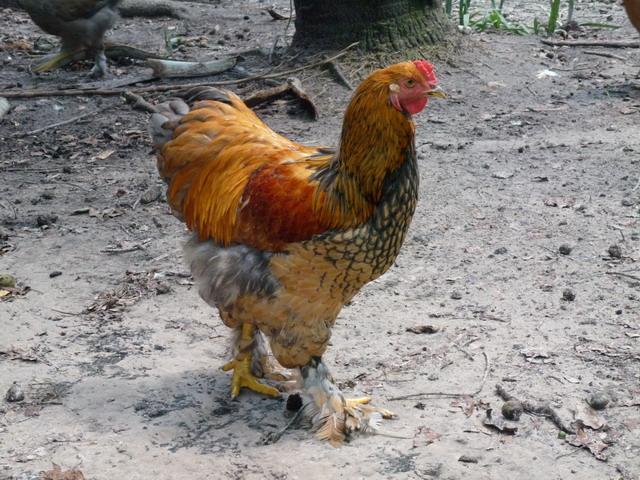How are the hocks running on these birds ?
Navigation
Install the app
How to install the app on iOS
Follow along with the video below to see how to install our site as a web app on your home screen.
Note: This feature may not be available in some browsers.
More options
You are using an out of date browser. It may not display this or other websites correctly.
You should upgrade or use an alternative browser.
You should upgrade or use an alternative browser.
Brahma Thread
- Thread starter vortec
- Start date
- Status
- Not open for further replies.
The pictures I've seen look really good, why?
My blues and blacks are looking good. This is my current blue partridge roo. His hocks are not bad, either.
It's still hit and miss on the chicks, though, I keep popping up some major vulture hocks!

Petey - love his chest!


It's still hit and miss on the chicks, though, I keep popping up some major vulture hocks!

Petey - love his chest!


gorgeous! Who carries the vulture hock gene, female or male or both?
Petey hasn't started to crow yet, but he has started to mount the girls, so I'm going to decide pretty soon what color to pair him with.
As for the vulture hocks, it's mostly my boys who have them, so I'm not sure who carries them.
As for the vulture hocks, it's mostly my boys who have them, so I'm not sure who carries them.
Last edited:
This is the simplified version, (which fits how my brain works), vulture hocks are recessive, requiring a copy from each parent to produce a chick with full blown vulture hocks. Birds that look prefectly normal may still be carrying a single copy. So a bird that has visible vulture hocks, having two copies, can not help but pass a copy on to all it's chicks, and should never be used as a breeder.
This seems to most commonly come from crossing with Cochins, whose massive soft feathering can often cover this fault. Overseas vulture hocked Brahmas are allowed in many countries, which would be easier, as it takes considerable effort to breed it out.
In reality it is more complicated than that, there are likely three genes and other modifiers at play here. Bottom line is don't use birds with vultire hocks in your breeding program if you ever hope to get it out of your line. Even clean hocked birds can produce VH chicks, if it is in their familly line.
This seems to most commonly come from crossing with Cochins, whose massive soft feathering can often cover this fault. Overseas vulture hocked Brahmas are allowed in many countries, which would be easier, as it takes considerable effort to breed it out.
In reality it is more complicated than that, there are likely three genes and other modifiers at play here. Bottom line is don't use birds with vultire hocks in your breeding program if you ever hope to get it out of your line. Even clean hocked birds can produce VH chicks, if it is in their familly line.
Last edited:
Both sexes can be vulture hocked.
Quote:
Doesn't appear to be anything wrong with her Tim.
Doesn't appear to be anything wrong with her Tim.
- Status
- Not open for further replies.
New posts New threads Active threads
-
Latest posts
-
How many chickens in 100 sq ft run
- Latest: BigBlueHen53
-
-
-
Chicken Haven Homestead Questions and Answers
- Latest: Chicken-Haven-Homestead
-
-
Latest threads
-
New coop, first time chickens on the way
- Started by Trenttrent
- Replies: 0
-
Help! Chicken with swollen butt?
- Started by Chiccenlover
- Replies: 1
-
Mystery death of thunder
- Started by Ashieschickenfarm
- Replies: 0
-
-
-
-
Threads with more replies in the last 15 days
-
-
-
-
pollipazzi's 365 project
- Started by pollipazzi
- Replies: 107
-
BYC's 52-week Photography Challenge. Week 1: (Jan 5-11, 2026). Theme: SUNSET
- Started by azurbanclucker
- Replies: 91
-
×


